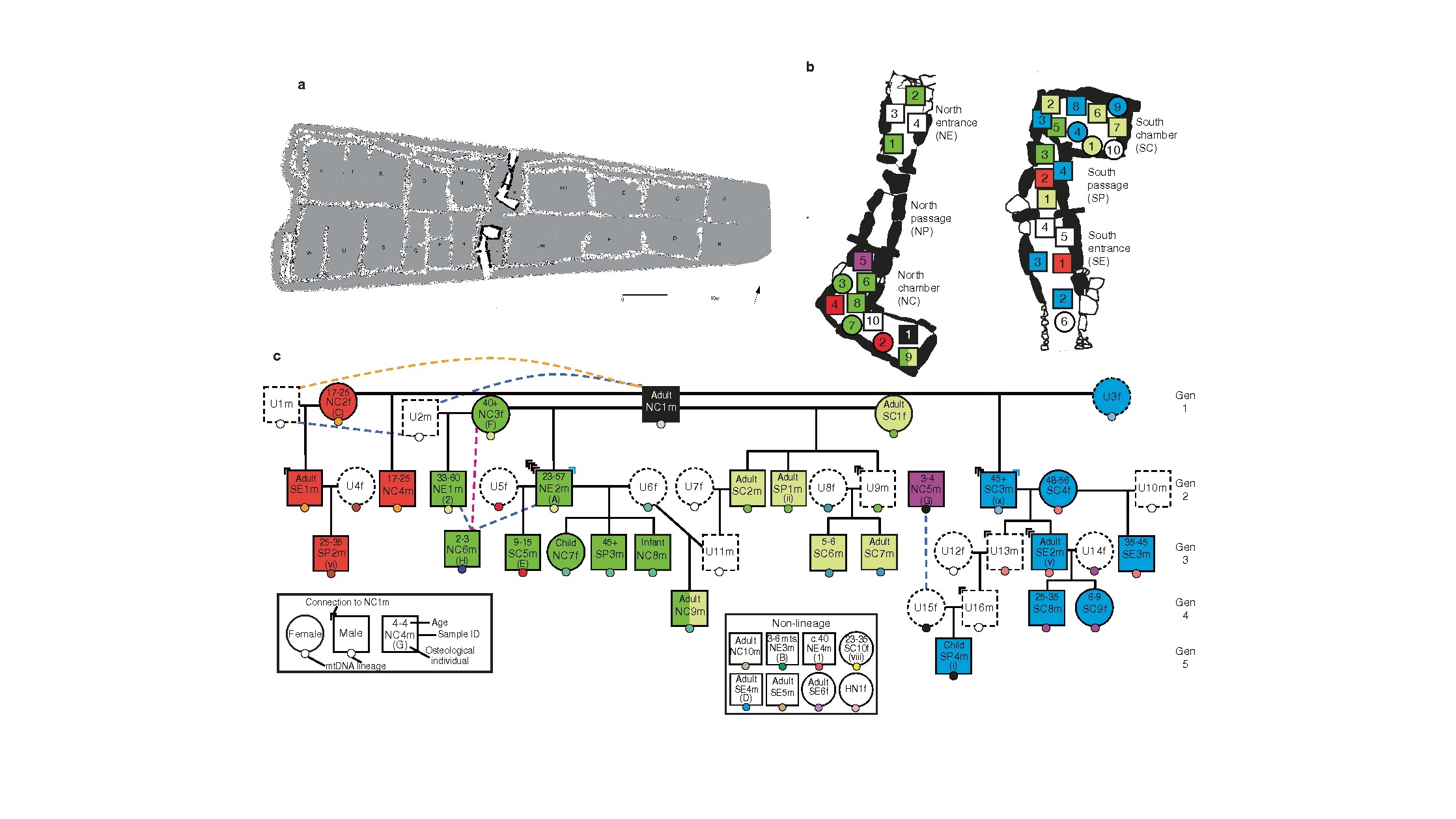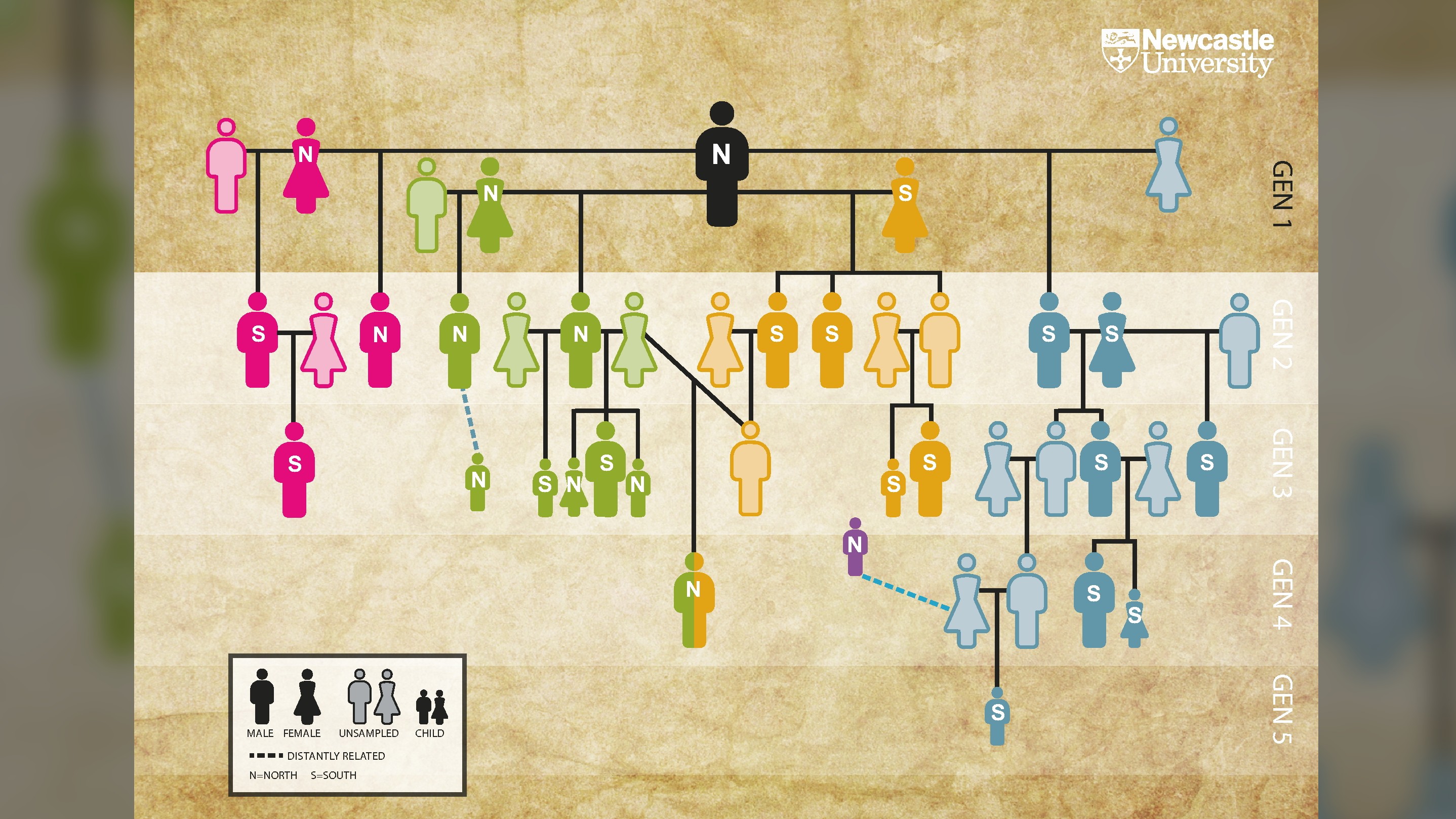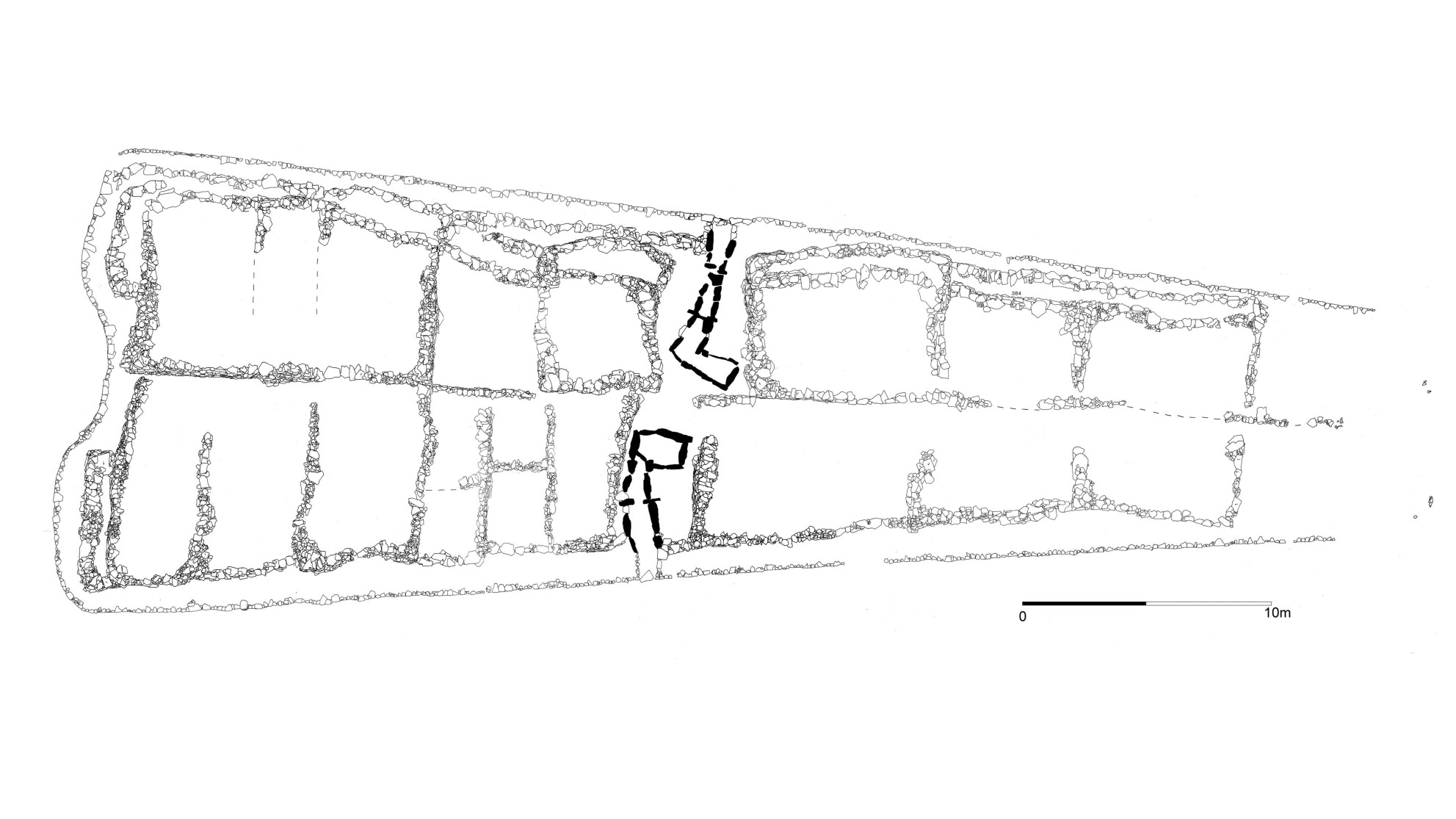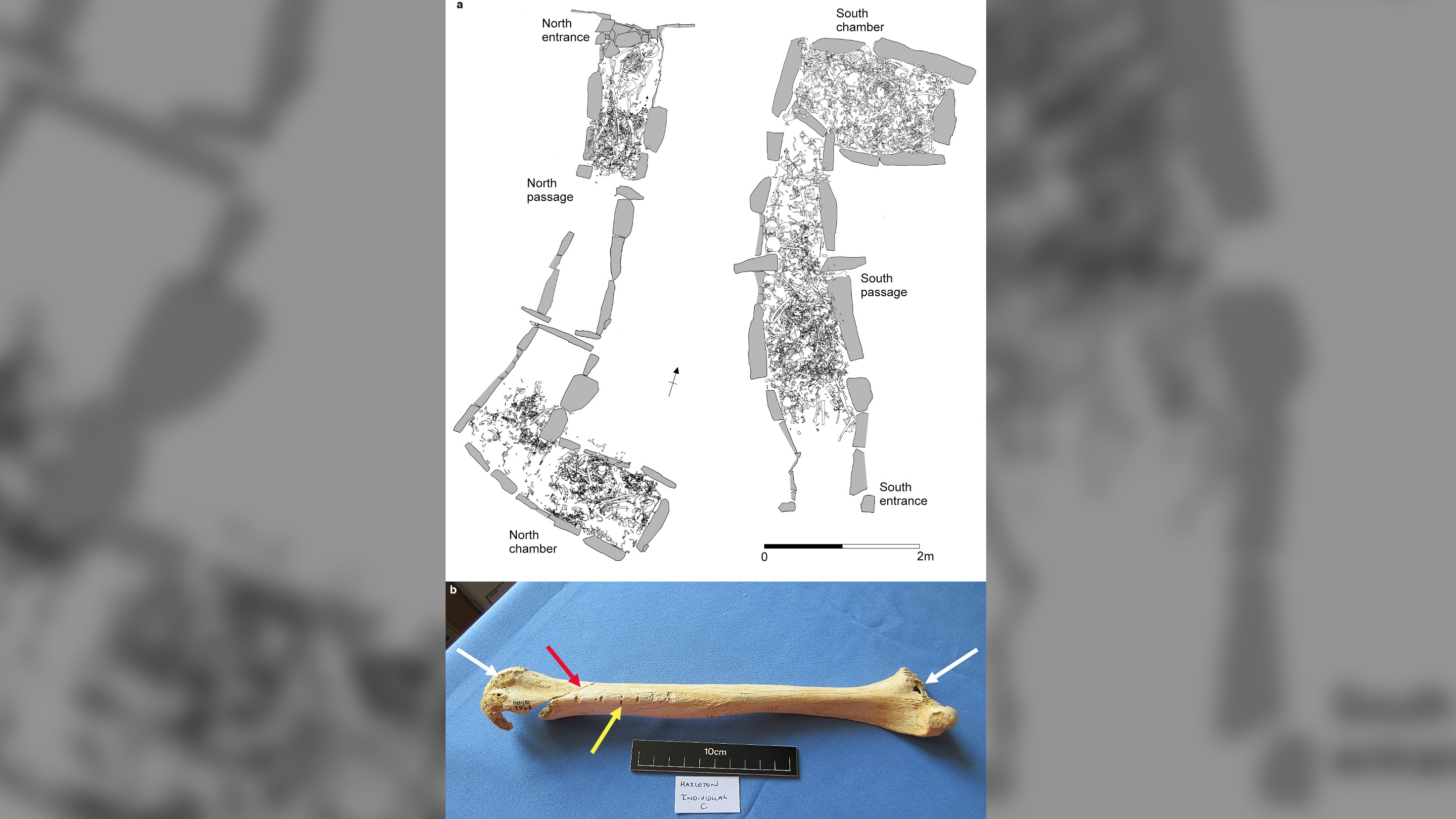Scientists just reconstructed one of the oldest family trees ever charted
The tomb holds the remains of five generations descended from one man and four women.

A nearly 6,000-year-old tomb unearthed in England holds the remains of 27 family members, representing a five-generation lineage descended from one man and four women, researchers have found using DNA analysis.
The findings suggest there were polygamous marriages in the upper echelons of Neolithic society at that time, because the researchers think it was unlikely that the ancestral man had four wives one after another; instead, he probably had more than one wife at the same time.
The analysis reconstructs one of the oldest family trees ever charted, said Iñigo Olalde, a population geneticist at the University of Basque Country in Bilbao, Spain, and one of the lead authors of a study published Tuesday (Dec. 22) in the journal Nature. Scientists from Harvard University in Massachusetts, Newcastle University in the United Kingdom and the University of Vienna in Austria were also involved in the research.
Related: Back to the Stone Age: 17 key milestones in Paleolithic life
The new techniques are likely to be quickly applied to other collections of ancient human DNA, he said. "This study is important because it's the first large family tree that we get from prehistory," he said. "But probably in the next few months or a year, we will get many more."
Neolithic bones
The bones in the study were from the human remains of 35 people excavated in the 1980s from the Hazleton North barrow in the Cotswold Hills, near the twin cities of Cheltenham and Gloucester in western England.
The barrow, or burial mound, was in a farmer's field where hundreds of years of plowing had threatened to destroy it completely, so archaeologists carried out the excavation to preserve what was left, Olalde said.
Sign up for the Live Science daily newsletter now
Get the world’s most fascinating discoveries delivered straight to your inbox.
A few years ago, a different team of researchers extracted genetic material from the bones and teeth of the entombed remains, and Olalde worked with the DNA sequences they contained to piece together how the individuals were related.
It soon became clear that the interrelationships were very complex. "When this became apparent, I thought 'Oh my God,'" he said. "It was quite surprising, but quite fun, to find all this family." The analysis could pin down the interrelationships from just 27 of the 35 bodies, including two young girls.




The results showed that the men were usually buried near their fathers and their brothers. This finding suggested that descent was patrilineal — in other words, later generations buried at the tomb were connected to the earliest generation through their male relatives, the researchers said.
But the tomb was also split into two L-shaped chambers, located in the north and south of the structure, and the choice of which chamber individuals were buried in depended on the first-generation women they were descended from — the descendants of two of the women were buried in the northern chamber, and the descendants of the other two women were buried in the southern chamber.
That finding suggested these first-generation women were also socially significant in their community and that their status was recognized when the tomb was built, Olalde said.
Family matters
Olalde also identified four men buried in the tomb whose mothers had been part of the lineage but whose fathers were not — termed "stepsons." These stepsons could have been adopted into the family when their mothers joined it, although it was also possible that the women bore children from men outside the family who were not recognized as their partners, he said.
Two of the daughters of the lineage who had died in childhood were buried in the tomb, but no adult daughters of the lineage were buried there; instead, they may have been interred in the family tombs of their male partners, Olalde said.
In the same tomb, he also identified the remains of three women and five men who had no genetic relationship to the family. It's possible that the women were married to men buried in the tomb and had either no children or only adult daughters who were then buried somewhere else, he said.
The significance of the five unrelated men is not known, but they may have been adopted into the family or somehow connected through relationships that can't be determined genetically, Olalde said. The Hazleton North tomb dates to very early in the Neolithic period in England, and it's likely that the immediate ancestors of the people buried there had come to Britain from continental Europe as part of an immigrant wave of Neolithic farmers at that time, he said.
While Neolithic tombs found on the European continent don't show such complexity, Olalde said, the relationships between those buried in the Hazleton North tomb probably reflect much earlier kinship structures within the immigrant society.
Originally published on Live Science.
Tom Metcalfe is a freelance journalist and regular Live Science contributor who is based in London in the United Kingdom. Tom writes mainly about science, space, archaeology, the Earth and the oceans. He has also written for the BBC, NBC News, National Geographic, Scientific American, Air & Space, and many others.









